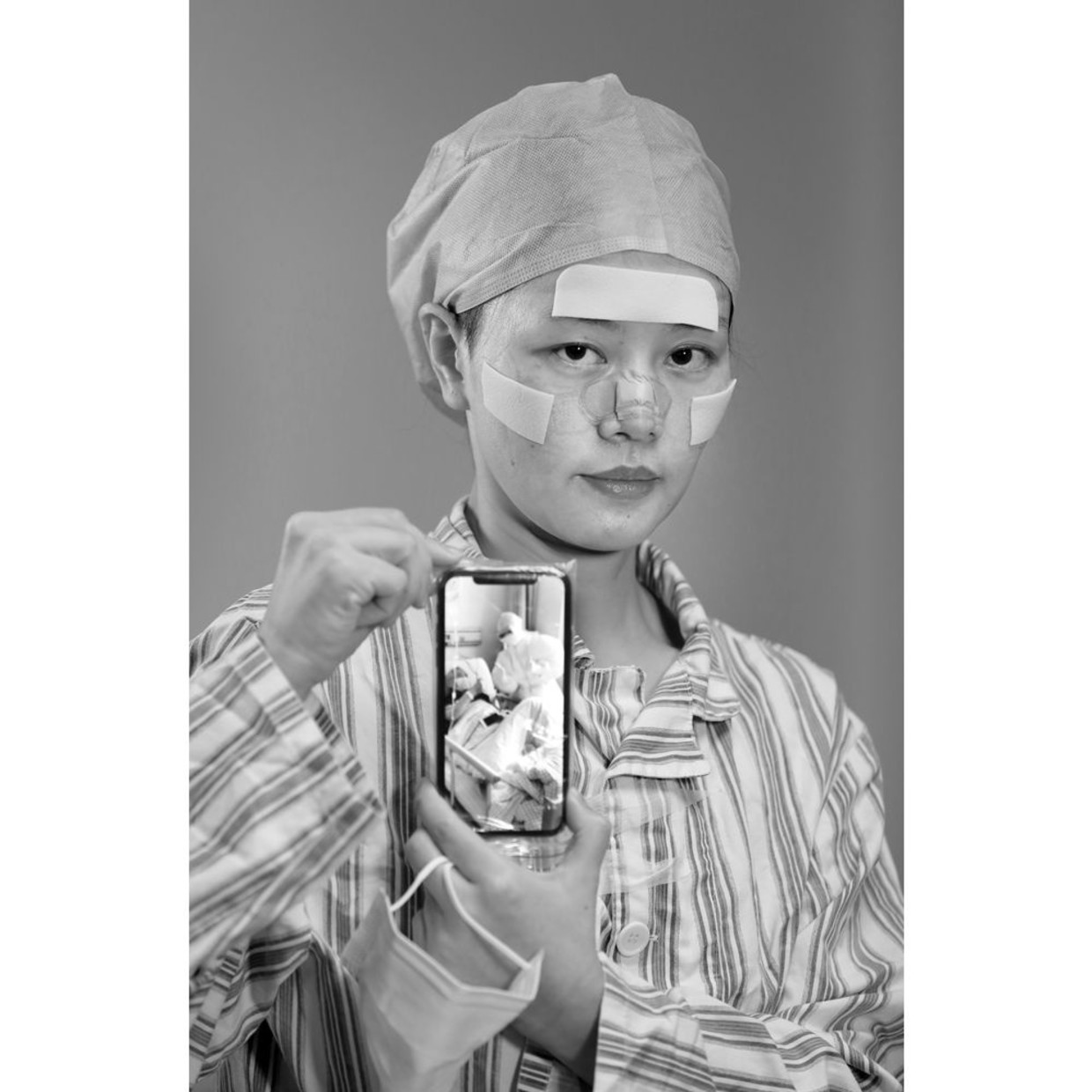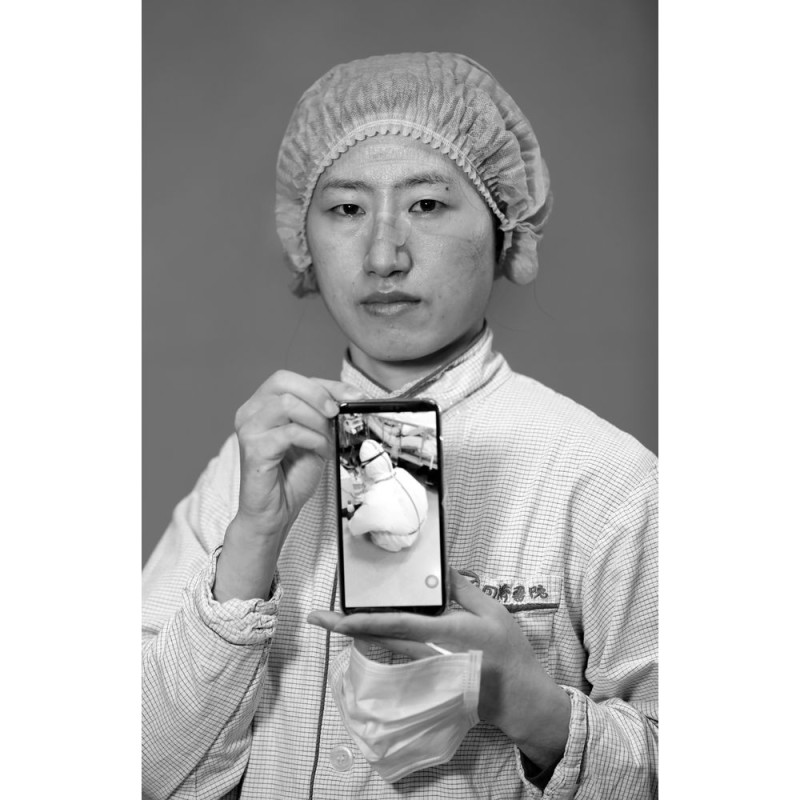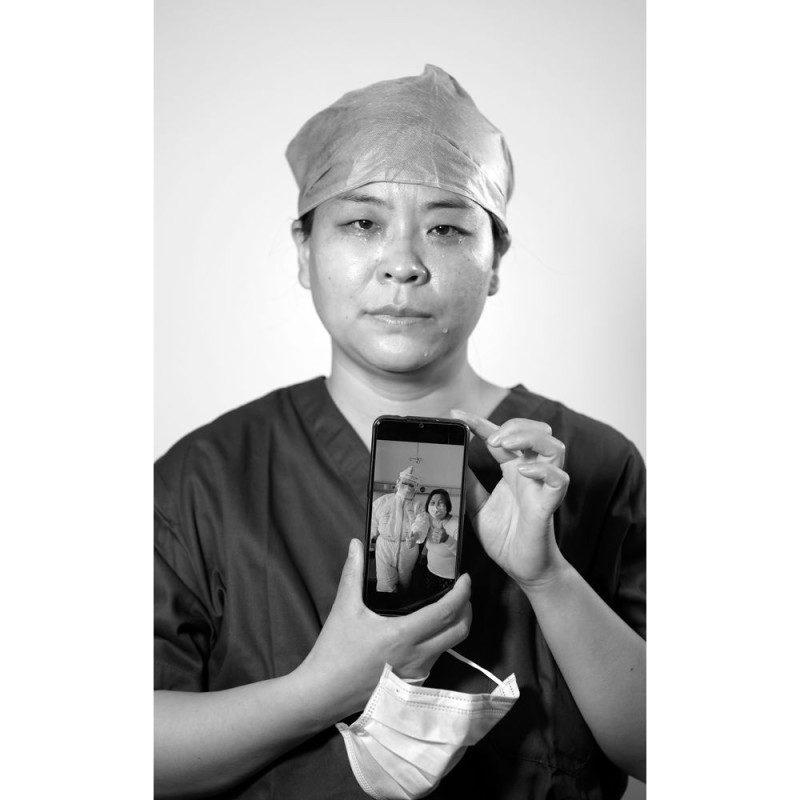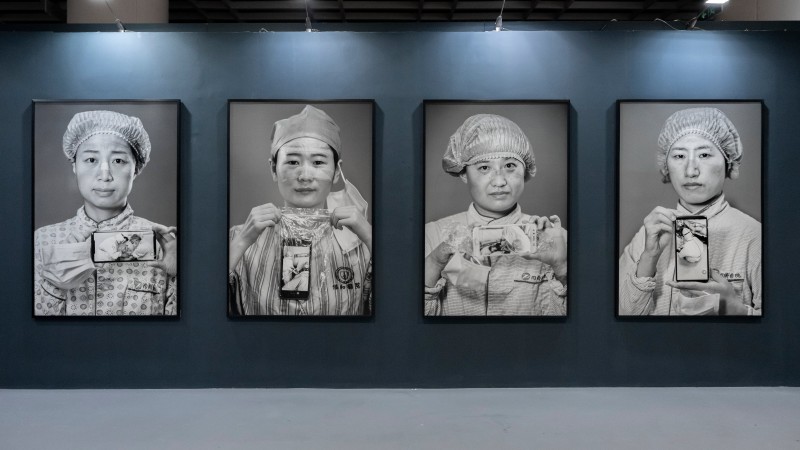Portraits of Empathy
Artists: Li Ge with his team in Wuhan
Curator: Gu Zheng
On February 20th, 2020, when nobody could predict when the COVID-19 epidemic could be controlled, Li Ge led a group of four people (Liu Yu, Chai Xuan, Cao Xu, Chen Liming) and accepted the mission of taking documentary photos in Wuhan, the epicenter of the epidemic with no turning back. Although without sufficient self-protection equipment, his team started the"frenzied"shooting of anti-epidemic scenes in Wuhan. They were clearly aware of the historical responsibility of this mission. As Li Ge remarked, "If we don't record efficiently, write in detail, and eulogize with great affection, it will be the worst dereliction of duty."
For 66 days, they organized nearly 200 photographers to carry out the "Photographing Angels" project. They travelled between designated hospitals treating COVID-19 in Wuhan, taking portrait photos of more than 42,000 medical team members from all over the country, to record their work and life as much as possible. All the efforts have given birth to the documentary photographic work Witness which is absolutely indispensable when speaking of the anti-epidemic history of Wuhan in the future.
The strength of photography is field record, which is to witness the scene. Like "heroes in harm's way", Li Ge's team overcame all kinds of difficulties and launched a highly intensive shooting project, leaving a full record of work images for the medical teams who braved untold dangers. The project itself takes courage and shows courage. It is a determined response from Chinese photographers to the severe epidemic, to challenge the threat of death.
In the course of shooting, Li Ge noticed that in such a dangerous environment, medical staff and patients had formed a closer relationship. Many medical staff had invaluable photos of patients and their work images treating the patients in their mobile phones. Most of these images came from the resident patients who asked for taking souvenir photos with the medical staff as long as they could move freely or before discharge. It usually doesn't happen in peacetime. Li Ge was acutely aware that this situation involved how to establish and maintain the relationship between individuals in the fighting against the epidemic. It also reflected a new form of humanitarian care from medical staff with the new media technology. After in-depth exchanges, Li Ge took a group of photos where medical staff were showing the group photos taken with patients or portrait photos rescuing patients in their mobile phones. The work Witness presents the scenes where medical team members walked to the buffer area outside the ward after their shift. Before washing and disinfecting or having meals, they took off their masks, displaying a temporary "pause"or posture, to showcase the authentic work scenes of the anti-epidemic workers.
For most contemporary peers, the mobile phone has become an indispensable means of life. It is a modern communication tool, and also an information storage device. A large amount of important information for each individual is now often collected in mobile phones. In Li Ge's portraits, photos of patients collected in medical staff's mobile phones and group photos of them with patients prove that they regard patients as friends and relatives, cherish this relationship, and embody this kind of humane care through the image collection. And Li GE keenly observed the "secret" in their mobile phones, and invited them to show their "treasures" in the heart to reveal the great love of medical staff and their friendship with patients.
Medical staff's care for patients is solemnly stored in their phones in the form of images with or for the patients. The mobile phone is not only the carrier of medical staff's emotion, but also reflects their empathy with patients. In the present-day fragmental communication, these mobile phone images inspire us that sincere communication can also be in such a way to move and warm people. In this sense, mobile phones are more likely to be a medium of empathy.
The group photos of Witness take the form of portrait photography, but its visual composition is complicated due to the existence of mobile phones which is an important part of the image. We may look at these portraits referring to the figure ground theory of Gestalt psychology. We found that a pure gray background is used to set off the half length photo of the medical staff, which makes the first layer of the figure ground. And in the first layer, the "image"of the upper body of the medical staff is used as the "background", which sets off the mobile phones in their hands, which constitutes a second layer. And the complete mobile phone screen itself became another "background", to display the "image" of the patients in the mobile phone screen. Such a progressive and complex relationship of layers of images shows the medical staff's care and solicitude for patients in depth.
The image of hands has always been a challenge in portrait photography. And this time, because of the appearance of mobile phones, the placement of hands has been fixed, which also increases the strength of emotional speech by the posture. The mask which is temporarily removed and the ligature marks on their faces, are details with specific connotations, further highlighted the risks the medical staff faced and their great dedication.
These are portraits of empathy carrying multiple meanings. First of all, it's about the empathy between doctors and patients. Li Ge makes a unique presentation through the empathetic relation by connecting mobile phone images with the portraits of medical team members. The second level of empathy is Li Ge's deep friendship with medical staff in 66 days of shooting in Wuhan. Such friendship is eventually presented, with such a complex visual composition.
It's Li Ge's photographic work that illustrates those anti-epidemic heroes like the Tang dynasty painting Meritorious Statesmen at the Lingyange Pavilion.
We will remember the faces of these medical staff and their contributions forever. At the same time, the contribution by teams like Li Ge's who fought in the front line to record those heroic faces should also be recognized.
Courtesy of artist.

 Wu Yinglin, nurse of the First Affiliated Hospital of Nanchang University in Jiangxi Province, 2020
Wu Yinglin, nurse of the First Affiliated Hospital of Nanchang University in Jiangxi Province, 2020 Ma Jingyu, nurse of The First Hospital of Jilin University, 2020
Ma Jingyu, nurse of The First Hospital of Jilin University, 2020 Kong Yaya, nurse of Heping Hospital affiliated to Changzhi Medical College in Shanxi Province, 2020
Kong Yaya, nurse of Heping Hospital affiliated to Changzhi Medical College in Shanxi Province, 2020



